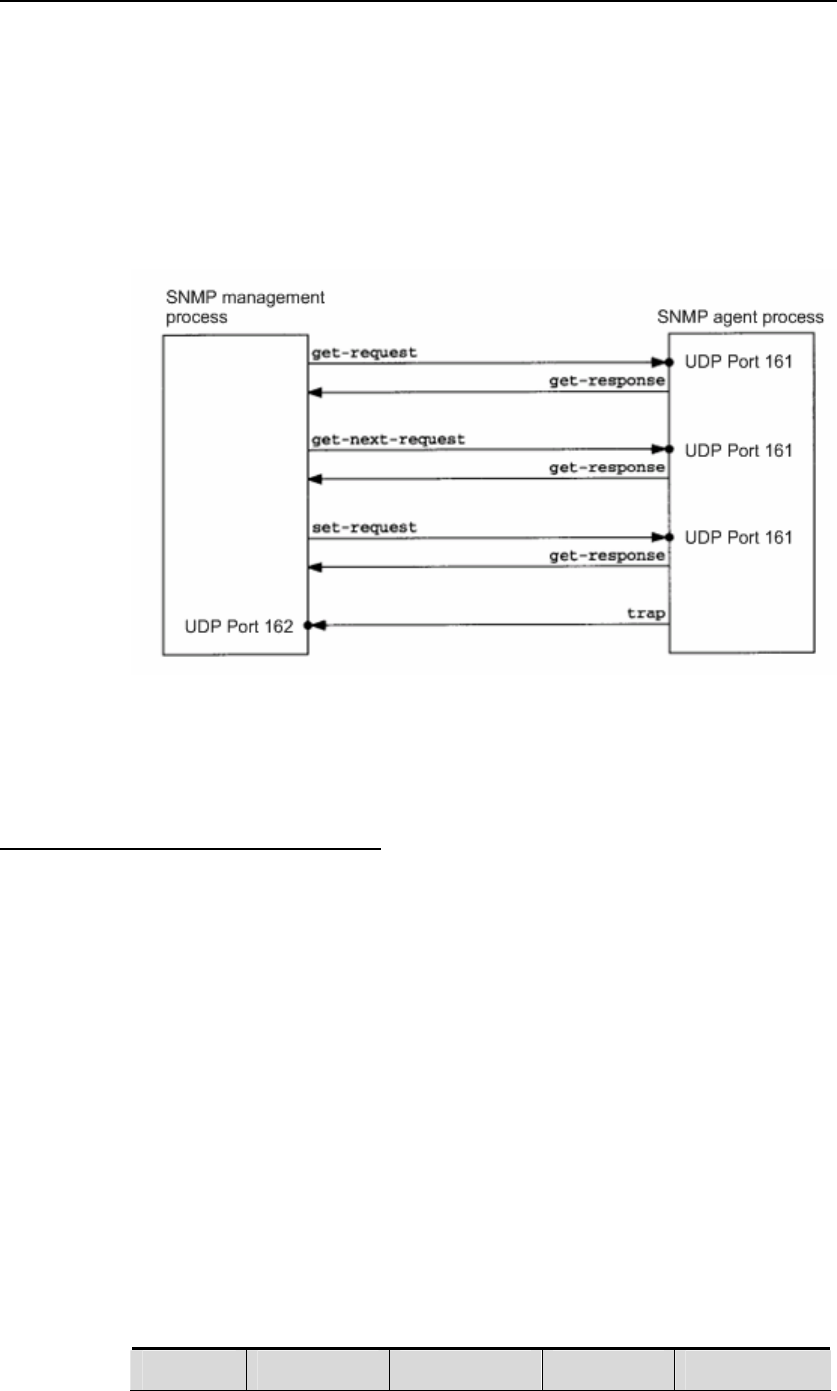
DES-7200 Configuration Guide Chapter 1 SNMP
Configuration
6. Trap: The SNMP Agent proactively sends messages to notify the NMS
that some event will occur.
The first four messages are sent from the NMS to the SNMP Agent, and the last
two messages are sent from the SNMP Agent to the NMS (Note: SNMPv1 does
not support the Get-bulk operation). These operations are described in the
following figure:
Message types in SNMP
NMS sends messages to the SNMP Agent in the first three operations and the
SNMP Agent responds a message through the UDP port 161. However, the
SNMP Agent sends a message in the Trap operation through the UDP port 162.
1.1.4 SNMP Security
Both SNMPv1 and SNMPv2 use the community string to check whether the
management workstation is entitled to use MIB objects. In order to manage
devices, the community string of NMS must be identical to a community string
defined in the devices.
A community string Features:
z Read-only: Authorized management workstations are entitled to read all
the variables in the MIB.
z Read-write: Authorized management workstations are entitled to read and
write all the variables in the MIB.
Based on SNMPv2, SNMPv3 can determine a security mechanism for
processing data by security model and security level. There are three types of
security models: SNMPv1, SNMPv2C and SNMPv3.
The table below describes the supported security models and security levels.
Model Level Authentication Encryption Description
1-4


















